Photographing Wildlife in India
by T. N. A. Perumal
Wildlife photography has an universal appeal because the caveman’s instinct of sketching the animals, feared by him, hunted by him and loved by him, is in all of us. Also, it is a creative and artistic expression of man, and his natural “Hunting instinct” to outwit an animal, and it is also the manifestation of the great ecological bond between man, animal and Nature. This tie of relationship gets renewed, strengthened and broadened by one’s quest for capturing the images of our fauna and flora in our wild places.
In the early 1900’s it was the ‘in-thing’; a fashion, a matter of pride and prestige, a pastime and considered a sport to hunt with a gun. Fortunately, a few enlightened persons discarded the gun and sported a camera to prove that photography is a far better sport, demanding even greater stealth and skill, better knowledge of animals and a sound sense of aesthetics. Also, animals shot with the camera are not dead, but alive and free to roam the jungles. Photographs are lively, more permanent and what is more, copies of such trophies can also be shared with friends.
Best of all, photography leaves no wounded animal in the forest, which may turn into a killer or man-eater. But, there may be photographers with wounded egos who mess up a good shot by jerking the camera trigger (shutter) instead of the smooth squeezing of the shutter at the right moment.
Most of our pioneer wildlife photographers are ‘Hunters turned photographers’, who were the first to realise the need to stop killing and start shooting with a camera to save our wildlife. We owe much to our early wildlife photographer” F. W. Champion, Col. Jim Corbett, Col. Bates, Phillips, E.H. N. Lowther, Wan Tho Loke, Dr. Salim Ali, E. P. Gee, O. C. Edwards and M. Krishnan. Most of them have set an example to us by having produced masterpieces of wildlife photographs inspite of tremendous handicaps, by way of heavy and slow equipment and photographic materials. Especially, F. W. Champion in my opinion is an unbeaten champion till today. His photographs of Tigers and Leopards obtained with trip-wire and powder-flash are hard to beat. Though, they were all of different temperaments and from different walks of life, what was common to all of them was the spirit of adventure, perseverance, patience, determination, dedication to the study of animals, pride of craftsmanship, resourcefulness and love for out-door life. Their passionate concern for wildlife and devotion to their craft and natural history is very evident in their inspiring photographs and literature. These are the qualities required in the making of a wildlife photographer.
We are fortunate indeed for having inherited this heritage of good photography from our pioneers. The present trend and proliferation of wildlife photographers in Karnataka State is entirely due to the inspiration of Mr. O. C. Edwards and his work.
What is a good wildlife photograph? The concept has undergone an evolution. Many changes in concept and evaluation have been influenced by the changing circumstances and awakening among photographers. A good wildlife photograph can be described as one that portrays the animal best; in its natural habitat and ambience, living its natural life. Capturing of its movements, character and mood with good composition, colour fidelity, lighting, tonal rendition, tonal delineation and tonal harmony make it infinitely better.
In simple words, a good picture is a sharp picture of an animal in its natural habitat and ambience, in soft pictorial light, doing something interesting or in motion; well composed and in truthful colour, if in monochrome with a good range of tones and good tonal separation of the subject from the background. The emphasis should be on truthful representation within the parameters of the medium; be it B&W or colour, as the value of a nature photograph is much enhanced by the accuracy of the statement, and at the same time the need for evocative, sensitive and pictorial interpretations – the plus factor, is not to be overlooked. In other words it can bge precise prose, or it can be poetic essay of a wildlife photograph.
Simply gone are the days of static pictures of wildlife, winning awards in salons, because it has become too common. Today, much more is expected in a wildlife photograph as standards, techniques and technology in photographic equipment have all greatly improved. By this it does not necessarily mean that every photograph should be an action shot or a pictorial piece. But it does need to have the required technical quality, plus visual impact and significant natural history information of the species in the photograph. Pictorialism is not always possible in wildlife photography, because the animals and the picture moments are not under the direct control of the photographer to make or create such a photograph. But, it is possible at times, when every thing seems to fall in its right place and, when such an ideal opportunity presents ‘itself’, one should be able to recognize the situation and click.
The film and camera vision and the human vision differ in many ways. Camera vision is two dimensional and the film’s chromatic sensitivity is restricted and human vision is linked to the brain which the camera lacks. As the camera and film see the scene differently from the human eye, it is necessary to learn to see; as the camera sees, and the film sees. Therefore one’s experience and knowledge of the chosen medium, be it B&W or colour will help in visualising and developing an “eye” for good pictures. It is really the ability to see and one’s talent of ‘intuition’ and the competence to “feel”, the picture, as it presents itself that makes a successful photographer.
Light is the illuminating source that transforms an ordinary photographic scene into an extra-ordinary picture situation. Side-lit, back-lit scenes of wildlife are very pleasing and makes the subject standout. A rim-lit shot of an animal gives it an ethereal quality. Similarly, angular texture light, spot-light effect and soft diffused light have their own special quality of enhancing the picture. The magic hours of the early morning and evening are the best periods for wildlife photography, when animals are interestingly active and soft pictorial light conditions also exist.
It pays to be consciously aware of the play-of-light on the subject that will dramatise the animal and give a properly balanced brightness value of light on the subject and the background to give it a three dimensional effect. On the other hand, an improperly balanced light conditions and an obtrusive background with distracting highlights and shadows and other jarring elements will completely ruin an otherwise good photograph.
The significant role of proper background is to be understood and remembered, which needs to be emphasised, stressed again and again because it can really make a picture or mar a picture.
A natural background slightly diffused, free of all distractions, with balanced brightness values and tonally complementary to the subject makes an ideal background which will add to the picture content immensely.
Animals are creations of the supreme artist – Nature. They are beautiful in form, colour and movement and each species has its own unique feature and typical character. They lend themselves well for photography. a broad-side pose of an animal shows well its shape and eye. An alert three-quarter facing pose is dynamic, depicting power and poise and, an animal in flight is a poem of grace, speed and liquid movement. Their body-language is more attractive, intimate and expressive which can make interesting pictures.
Life, character and mood of an animal is reflected in the catchlight in the eyes of an animal. So, it is highly important to capture the catch light of the photographs. Eye-level camera angle, and low angle of light, and diffused light will highlight the catch-light to good advantage.
A well composed picture is very pleasing and attractive, it conveys a feeling of harmony, balance and unity and does not disturb the mind and eyes of the viewer. Proper arrangement of tonal, colour and graphic elements in the picture space in right proportion of the main subject and the background is necessary.
The basic rules of pictorial composition needs to be adhered to. For example: the animals should form the main centre-of-interest and placed in the picture space at the division of 1/3rd and leave the rest for habitat, etc. This ratio can be changed to suit individual taste but what requires to be kept in mind is that the size of the animal shown in the picture area easily conveys the area of the size of the animal in relation to its habitat. When an animal is depicted in broadside left-to-right, one should leave more room on the right side and, when an animal is shown right to left, to leave more space on the left side to suggest the depicted direction of movement of the animal. Also leave less space in the foreground and bottom of the picture and relatively more space above on top of the animal to give it the feeling of balance, stability and a sense of orderly arrangement of the different elements in the picture. Tone-wise, a dark animal is to be shown against a light or well-lit background is another rule of composition, likewise a light coloured animal shown against a darker background makes an attractive picture. Here, I would like to point out that the tone of the background will also suggest the diurnal and nocturnal life of the portrayed species and it is necessary to avoid showing a diurnal species in a nocturnal black background. The other rules like the leading line, S curve, L composition, etc., can be effectively used to make a good presentation. Different amounts of foreground, background, sides and the placement and the scale of the animal shown in the picture format convey different meaning of distance and depth. It should be a meaningful arrangement of the subject and space of the picture area in ta pleasing manner to visually communicate movement, mood and unity. Of course, all these rules are only general principles and can be broken upon one’s taste and understanding of the aesthetics.
The crucial factor of image size on the quality of enlargement or reproduction is not to be ignored, the rule as already mentioned is that the main subject should occupy at least 1/3rd or half of the picture area and the rest should show the habitat or ambience. A smaller image size requires greater magnification or enlargement resulting in loss of definition and increase in grain to yield a visually poor quality picture. An adequate zoom lens aids in accurate framing and filling-up of frame and alternatively whenever possible one should either move closer to obtain good image size or use a longer focal length lens to achieve the same. But, a picture taken from close quarters is always superior to the one shot from a distance, even though one may be using a longer tele lens from that distance.
Another very important factor and less realised problem is that of the effect of minimal camera shake, which seriously affects definition. It takes away the biting sharpness in the image and one should be conscious of this and take all pains to avoid camera shake. For this depending upon the situation, the use of a tripod, unipod, chestpod, shoulder pod, clamp pod, etc. can be used also resting the camera firmly against any suitable support – a rock or a tree and use a towel to form a cushion for resting the camera on it against any available support will help in getting shake free pictures.
To take action pictures of animals in motion; use the combination of fast shutter speed and wide aperture; frame the animal properly in the view finder keeping focus on the animal and pan the camera smoothly in the direction of the movement of the animal and click just as the moment of peak action occurs, leaving more space in front of the animal than behind it.
Good field practice and experience will also help one to develop one’s faculty of fast-reflexes to click at the decisive moments. It will also pay rich dividends of highly effective and telling slices-of-life, photographs of wildlife.
Always learn to shoot consciously being aware of all the significant points and weigh the picture making possibility of every situation; use the right lens and aperture combinations and not click at random hoping that things would turn out alright, which rarely happens in wildlife photography.
The significant influence of chance and luck do also play a crucial role in wildlife photography, because it is the ‘animal’ and the ‘special’ situations that make great pictures. Neither the animal nor the situations can be ordered or created and, for a photographer to be present at the right place at the right time is not always due to one’s planning; it happens, however, to favour the hard-working and alert photographer.
Study of animals and their behaviour is very necessary to understand animals, to properly interpret their mood and movement, also to avoid danger and disappointments.
Wild animals in different places behave differently depending upon their past experience and the conditioning that has been imposed upon them. Different individual animals of a species also behave differently which is to be noted to modify one’s method of approach to photograph them.
Also, the “flight and fight” distances of animals – that is the critical distance or proximity, an animal will tolerate needs to be taken into consideration. It will either run away from the photographer or demonstrate or come for him when this distance is crossed. This distance again will vary from species to species, between individuals of the same species, from season to season, and area to area. Many external factors also contribute towards this intriguing behaviour among animals. For example, a tiger in Kanha will behave differently from that of a tiger in Dudhwa (where there is too much disturbance and pressure on tigers). Like wise, the elephants of the Moyar part of Mudumalai sanctuary are suspicious, and aggressive because there is perennial conflict between man and animal. The natural movements of elephants are also seriously affected by encroachment of their habitat, whereas the elephants in Bandipur area are free from such disturbances and amenable and photographable. Another interesting observation has been that the same elephants of Moyar area behave normally after crossing over from the area of confrontation into the protected area of the sanctuary proper. All these behaviour patterns of animals are to be studied to plan one’s strategy accordingly.
Big solitary tuckers are generally much feared but they are really gentlemen giants among elephants, but, it is the teenage tuskers, mothers and aunties with babies, are the ones that can be troublesome and dangerous. So, one should keep a sharp lookout for these animals.
Elephants are also intelligent animals capable of almost human behaviour. I once observed an irate cow elephant brandishing a large piece of dead-wood picked up from the forest floor and flinging it at a boat-load of visitors. Luckily for them the missile sailed over the boat missing the boat by inches only. On another occasion, I was intrigued to see an elephant grazing on top of the slope of a hill push a football sized rock with its forefoot and send it rolling down to land near the visitors’ boat down below in the water. Both these incidents happened in the Periyar Tiger Preserve of Kerala.
It will be profitable to learn and know which animal can be photographed where and when; the best season and, the right time when a particular action or aspect of behaviour of the animal is known to take place. For instance, elephants will be seen in plenty in Bandipur during June, soon after the first showers. Similarly, peak of summer is the best time to visit Periyar for photographing elephants frolicking near water, and if one wants to photograph Swamp Deer in combat in Kanha, the best period would be December. The Chital get into rut in Bandipur around September.
Speaking of seasons, the rutting season is particularly good period, when animals are intensely active, vocal, pre-occupied, demonstrative, and aggressive. Males will challenge, chase and fight each other, become possessive of females and being to mate. They will be more tolerant, almost indifferent to the presence of a photographer during this phase of strong biological urge among animals and one should take advantage of this excellent opportune time for rewarding wildlife photographs.
Now, to the vexed question which is the ideal medium, B&W or colour? I fee that colour is the natural choice; the natural world is colourful and the different hues and gradations of colour in nature convey the shades of moods quickly and directly to the sense of a person and evokes immediate emotional response and appreciation.
Further, a colour photograph of an animal or a bird conveys all the colourful features of the species, whereas a B&W photography of the same will represent it in shades of grey and black and white, thus masking all the colours and making it drab, and unidentifiable.
Monochrome is also an abstract rendition of the subject in shades of grey and black and white, making it only a graphic picture. Further, what really aids monochrome is the inability of the human eye and mind to identify or reject the different shades of grey in a B&W photograph as correct or incorrect representations of the different colours of the subject, whereas in colour the eye notices errors in reproduction easily even though colour is said to be ‘subjective’. Best of all, and the important point in favour of colour is that it depicts the subject as natural, as the eyes see it.
Here, I would like to give an example; when photographs of a colourful bird like the Kingfisher in B&W and colour are viewed side by side; the difference is obvious, because the vivid colours of the bird gets lost in B&W and proves the point that colour is natural and attractive, which makes colour the best choice.
All the same the manipulations in processing and printing that are possible in monochrome to produce highly effective photographs of special charm and appeal cannot be ignored. It is also to be appreciated that proficiency in B&W photography lays a solid foundation for technical competence, visualisation and aesthetics in photography. It is also true that B&W is more permanent, even so, in recent years the colour technology has advanced so much that, in due course, the question of permanency may not hold good; as CIBACHROME and KODACHROME already claim as much permanency as B&W.
Ofcourse, monochrome is definitely not going to fade away as it has its own charm and special uses; colour and monochrome are to be really considered as two disciplines. It is upto the photographer to use the right medium for the right subject. For instance, there are occasions when there is no colour at all in the scene (an elephant in a forest in summer) when it may be profitable to shoot in b&W as a monochromatic subject will render best in monochrome only.
As for equipment suitable for wildlife photography – the dictum – ‘Bigger the Better’, is a sound policy. A large format (2B size or bigger) negative or transparency is definitely superior and yields sharper enlargements and reproductions. But, unfortunately even the modern large format equipment is bulky, slow and impractical under the average field conditions of wildlife photography. Also candid pictures of animals in action or in flight is almost impossible with this equipment.
A medium format (6×7 cm, 6×6 cm, 6×4.5 cm) may be a more manageable proposition, and for this format, prism finders, TTL meter, motor-drives, tele lenses and zoom lenses, which are needed for wildlife photography, are also available. But here again, the factor of how handy it is when compared to 35mm SLRs and the factor of cost, availability and total weight are also to be carefully considered.
The main governing factor in choosing equipment will be what one wants to do, and how much and how far one wants to progress in this hobby and how one chooses to present his work, slides or prints and the intended size of blow-ups of pictures.
A modern 35 mm single lens reflex camera is definitely light and handy and it has all the modern technological innovations in optics and electronics incorporated into it. It is an eye level camera with interchangeable system of lenses and screens, sophisticated TTL metering, fast, and smooth, silent and quartz controlled shutter, special features like auto-exposure, TTL Flash, aperture priority, shutter priority, programme, auto focus etc. Fast telephoto lenses, quality zoom lenses, motor-drives and remote-controls are also available. The fine quality image produced by thise equipment will meet even the requirements of a discerning photographer, which fact makes the modern 35 mm SLR camera a very good choice for wildlife photography. any modern 35 mm SLR fitted with motor drive that is not too noisy, and a quality medium-range zoom lens, say 80/200 mm or, better still a 50/300 mm is adequate for photographing most of the wildlife in our jungles. Of course, a quality 2X converter or prime telephoto lens of 300/400 mm will be useful.
Now we shall look into the general principles of “do’s and don’ts”, and some tips to be followed in wildlife photography.
One should thoroughly acquaint oneself with one’s equipment and accessories. Familiarise oneself with the area of work to observe which animal is found where and when, and also make mental notes of lighting, weather, and note the general reaction of wildlife to the presence of a photographer in the area. Wear comfortable clothes, cap and shoes in appropriate sober camouflage colours; like khaki or brown. Avoid sudden movements and carrying of shining objects on your person; also avoid unnecessary noise.
Refrain from taking pictures from moving vehicles (car, boat and elephant). Don’t be under the impression that the use of a fast shutter speed will take care of the shake, which is a wrong notion. Avoid clicking when the engine of your vehicle is running; always wait for the engine to be switched off; also consciously avoid clicking, when there is movement caused by co-passengers shifting positions in the vehicle.
The use of a motor-drive, greatly helps in this respect and it makes clicking at the crucial moment easy, sure and with the automatic film advancing of the motor-drive, you are ready for the next shot without having to move your head and hand. One can never miss a shot if a motor drive is used intelligently.
Keep the lens pre-focussed between 100’ and infinity, so that it is quicker to refocus when an animal presents itself. Always focus on the animal’s eye or head. Use and trust the TTL meter of your camera. of course, your TTL meter and camera should be checked for calibration and, if necessary, proper adjustments should be made. Use the fastest shutter speed possible to avoid camera shake and the subject movement, also use the smallest aperture possible to ensure good depth of field, so that the entire animal is in focus. Use the smallest possible focal length lens in a given situation.
Protect cameras, lenses and film from heat, dust and moisture. Plastic bags of different sizes to cover the equipment in the field will help, also every day at the end of the trip; brushing and cleaning of cameras, lenses, motor-drives and other accessories is essential.
Cameras and lenses should be held gently with care to avoid knocks and bumps as thee shocks can seriously affect the equipment. It pays to ensure that fresh cells and batteries are fitted to the equipment an to check the whole system for proper functioning before setting out into the field. Always carry extra cells, batteries and sufficient films. Also carry an extra camera body and a hand exposure meter which will come in handy in case the TTL metering of the camera or the camera itself lets one down. The camera settings should be set for the correct aperture and shutter speed. Mode of operation of camera and motor drive are to be periodically checked for any involuntary shifts while handling equipment. It is important to check that the camera is loaded with the right type of film one wants to use.
Another suggestion is that whenever one finds that there are only a few frames left in the camera, it is better to rewind and load a fresh roll, so that at the next clicking opportunity one will have an entire roll to shoot and thereby not lose a chance because of time lost in reloading the camera at a crucial time.
Always keep exposed film separately and safely, other wise to lose precious films (exposed) can be disastrous. Also, take the precaution of not making the serious mistake of reloading already exposed film once again into the camera. this can be prevented by following the simple rule of rewinding exposed film completely into the cassette without leaving the tongue of the film out of the cassette.
Always keep calm and alert and do not get excited; as it will be self defeating to be excited when a good picture opportunity is before you. An excited person tends to be less steady, clumsy, fumbling, hasty in clicking, taking wrong exposure decisions, using wrong equipment and faulty in anticipation and technique, resulting in either total loss of a good picture or at the most produce a second best. One the other hand if one learns to control one’s excitement one will able to properly assess the picture possibility of the situation, use the right equipment and technique with preparedness and anticipation to convert a good opportunity into good pictures.
When an animal presents itself, stop at a respectful distance; allow it to settle down and get the feeling that you are not to be feared. Soon the animal will relax, behave naturally to give interesting poses and picture situations.
The longer a photographer stays in the field with the animals, beter are his chances of good photography. Also, one should learn to brave the weather and long waits. For luck favours the brave, they say, it might come true, as interesting pictures of unusual animal activity and picture situations which occurs only in inclement weather can also be photographed.
While on a riding elephant and if it happens to be a tusker, a close approach to a male tiger is best achieved without giving the feeling of confrontation by making the elephant turn around instead of facing the animal head-on, approach the animal in reverse gear showing the back of the elephant towards the tiger to give the signal of submission in animal language. The tiger will respond favourably and not get annoyed or alarmed. Similarly to photograph a wild tusker in the forest from a car, the approach can be manoeuvered by taking the car in reverse, so that even if the animal means business and comes for you one can get away fast from the charging animal.
Don’t disturb or frighten an animal in order to get action pictures; don’t surprise or corner an animal, or follow an animal far too long. Do not place yourself between a mother and baby or be in the direct path of an animal on the move. Avoid being in the middle of a herd of elephants. Don’t stare and look directly at an animal when close. Please don’t shout or wave at animals. It is unwise to approach an animal directly. move in a zig-zag fashion and slowly get loser to it. Stay still and do not make unnecessary movements when the animal is watching you. Be alert; and watch for alarm signals, and warnings given by animals while taking pictures and immediately withdraw, if the animal shows annoyance and moves towards you.
Wildlife are less shy of a riding elephant. It can take one quite close to animals even in impenetrable tracts, but the chief drawbacks are the steep angle of view one gets from the elephant and the element of camera shake due to the movements of the riding elephant. Both these factors need to be managed by shooting more frames to increase the chances of getting a few sharp pictures; and shooting from a distance to reduce the angle of view or wait for the animal to move to a better location, or persuade it to do so.
For taking pictures from a riding elephant, it is better to use a minimum of 1/250th of a second shutter speed. Follow the rhythm of the movements of the riding elephant and click when the animal is steady, and in a phase of least movement. The only snag is that the best action of the subject, and the moment of least movement of the riding elephant unfortunately do not always coincide.
Never get down from a vehicle to approach an animal on foot in the hope of getting closer to it. Animals flee at the sight of moving humans. Chances are better; if one stays in a vehicle. Be judicious in using a long tele lens, as the fore shortening effects of long tele lenses can give a ‘cut and paste’ effect in a photograph.
Though, a solitary animal in a typical characteristic pose, in action, in pictorial light and in proper relation to its habitat can make an evocative picture, two animals in company, in courtship or in combat has additional plus-points. Like wise, a small group or a large herd of animals in their various activities, in a peaceful setting and in interesting light and especially when they form a well-knit homogenous, harmonious and dynamic formation, definitely makes a much better wildlife photograph.
But, technically, to include more than one animal in the picture poses a serious problem because of the shallow depth-of-field of long lenses; as it will focus sharply on only one animal and throw the other completely out of focus, unless ofcourse all the animals are in one plane of focus – like two animals fighting in broadside. That apart, the problem of animals grouping in discord and disharmony is always greater in bigger groups of animals. One has to be sufficiently close to the animals and use a short focal length lens to cover the group and use a smaller aperture on the lens to achieve better depth-of-field to render all animals in sharp focus. Therefore it may be simpler to concentrate on making good single animal photographs and attempt groups only in an ideal situation.
Avoid taking pictures from extreme angles and taking pictures in harsh light and dappled light and shade conditions that prevail in the jungle between forenoon and afternoon. If unavoidable, and when monochrome is being sued, expose for the shadows and develop for the highlights to soften the extreme contrast or better still, use a two-bath developer formula for retrieving the results.
B & W or colour; medium speed fine grain films of 100 ASA – 200 ASA give the best results. Of course, the faster 400 ASA Kodak Tri-X film (B&W) and Fujichrome 400 D film (colour slide) will come in handy under low light conditions.
Standardising your technique by exposing one type of equipment, film and the worked-out combination of exposure and development will ensure getting consistently predictable good results. It does not pay to keep experimenting all the time with different combinations of equipment, film and processing; as lost opportunities can never be repeated in wildlife photograpy.
For monochrome work, slightly generous exposure and slightly curtailed development yields good results. However, over-generous exposure will increase grain, reduce contrast and will result in loss of definition.
Half-a-stop over exposure is recommended for best results when negative colour films are used.
Colour slide or transparency films require optimum exposure, or may be 1/3 stopless or 1/3 stop higher rating than the (rated) ASA of the film used for better saturation and sparkle. But too much underexposure will give muddy slides lacking in shadow detail.
The technique of ‘pushing’ films to gain extra film speed with the use of special developers or increase in development time and such combinations do not give satisfactory results for the quality conscious wildlife photographer. Correct exposure and the sue of a standard fine-grain developer formula with time and temperature method of processing is highly recommended for monochrome.
Different colour films have slightly different colour balance, characteristics and responses, the small shifts in colour balance due to the colour quality of light prevalent at different times of the day need not be taken seriously because this aspect is really a matter of personal preference or (you may call it) personal prejudice! The shifts in colour balance due to improper, inconsistent processing is to be solved by custom processing by a reputed lab or home processing.
Please do not try to conserve on film; shoot enough and more at every opportunity. Situation permitting, tray bracketing of exposures, (1/2 a stop +/_), although, one rarely gets a long enough chance to do it. All the same, it is a good idea to shoot more and not regret later as good opportunities do not present themselves often and it is criminal to waste an opportunity by not shooting enough. It is really is not prudent to save on film. Film is the least expensive item on the budget of one’s trip for wildlife photography.
I feel that the main motivation for being in jungles with our cameras is to be one with nature; far away from the maddening rat-race, pollution and cacophony of modern life, and to renew our spiritual relationship with our beautiful forests and animals – the ‘beautiful people’. Let us enjoy their company and not disturb them unduly in our over-enthusiasm to get the ‘great’ pictures. Let us make it a sport and not introduce unwanted pressures, interferences and cause unnatural ‘conditioning’ on animals that may unduly modify their normal lives.
It will be fascinating and beneficial to watch; to learn, and photograph the animals, birds, trees, wild plants, wild flowers and the smaller denizens of the forests. Also absorb the mystic vibrations of the forests that make a total experience and lead one to become a sensitive, concerned, conscientious and a total wildlife photographer.
Let our tribe of wildlife photographers increase; more wildlife and camera enthusiasts would mean more concerned people championing the cause of wildlife preservation, also it will augur well for the safe future of our sanctuaries, national parks and its wildlife. Perhaps, for the future welfare of man itself.
The Photographs: Tiger on the Prowl and Leopard on the Prowl are taken out from the pages of the books: With a camera in Tigerland and Jungle in Sunlight and Shadows by F. W. Champion”. Admirable examples that illustrate the points discussed. The unique character of the animals are beautifully portrayed in the photographs.
Tiger on the prowl is a superb shot of the bold and majestic animal shuffling along the jungle path nicely framed by an attractive arch of bamboo.
Leopard on the prowl is an incredible photograph capturing the stealthy, apparition like movement of the most difficult animal to photograph in our jungles.
Back Cover: Peacock on anthill – T. N. A. Perumal
- GoPro Hero 12 Black - 6 September,2023
- Leopards: The Last Stand - 2 July,2023
- Drifting in the Waters of Sundarbans - 26 March,2023


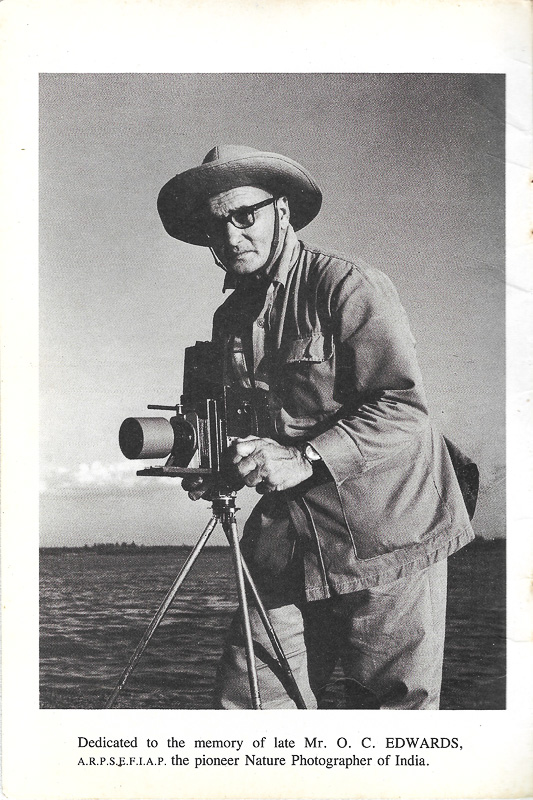
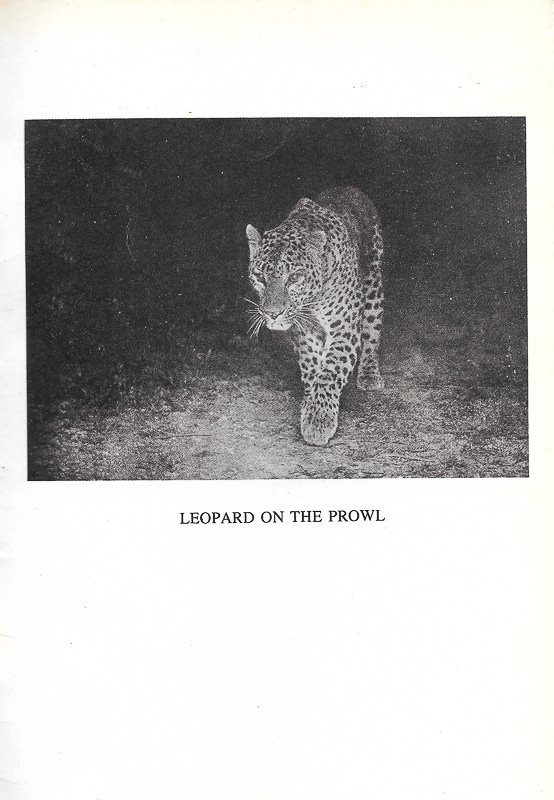
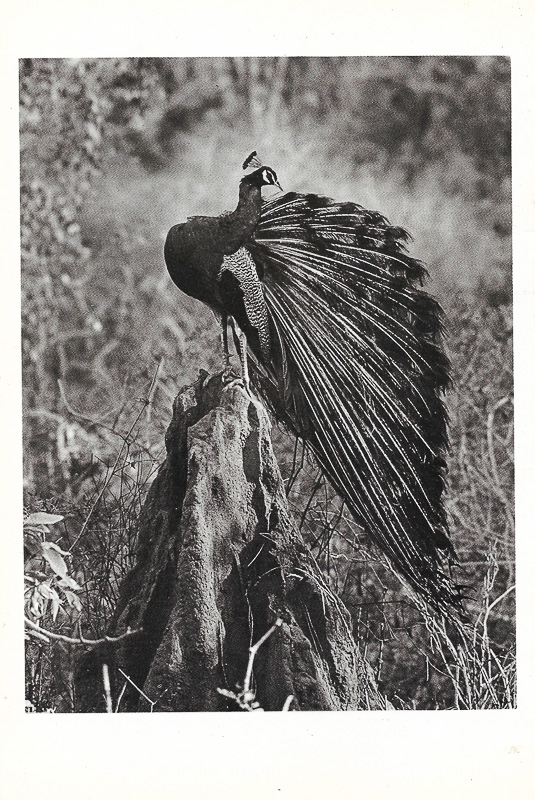

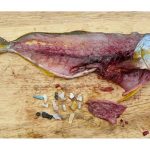
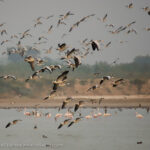
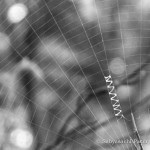
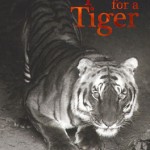
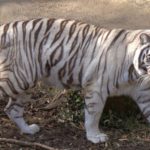
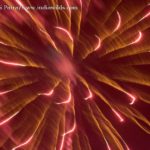
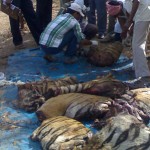



The essay is more than a master class in wildlife photography — it describes the very spirit and soul of photography in vivid detail in a fluid language. It will be a crime not to bookmark the page if one is a photographer of any genre.